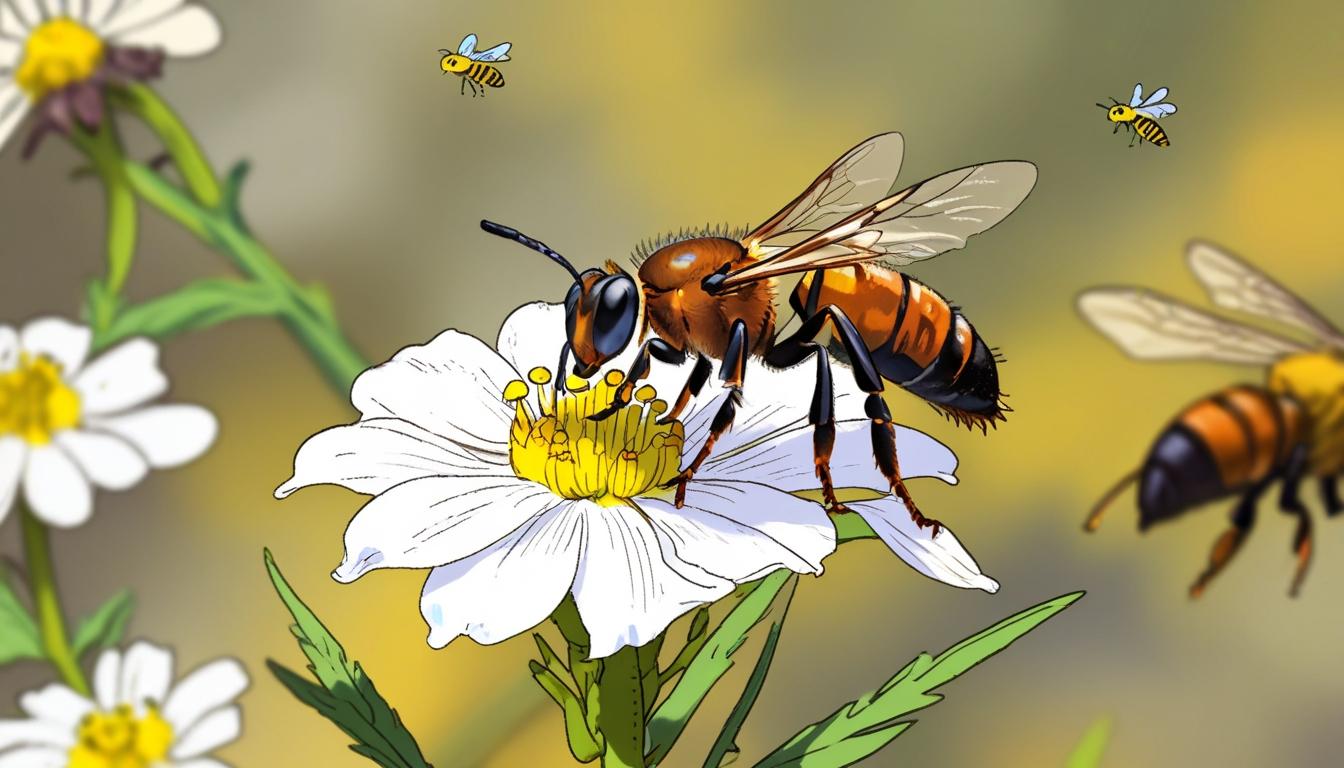Wildlife experts warn of rising Asian hornet sightings that threaten Scotland’s bee populations and biodiversity, urging public vigilance and readiness.
Wildlife experts have expressed growing concern over the potential invasion of Asian hornets in Scotland, a species known for its predatory behaviour towards bees and other pollinators. These invasive insects, also referred to as yellow-legged hornets, have been sighted with increasing frequency in the UK, particularly in Jersey, posing a significant threat to Scotland’s bee populations and overall biodiversity.
Recent findings indicate that the warm and dry spring conditions have led to an unprecedented rise in Asian hornet sightings, with reports stating that 262 queen hornets were recorded in Jersey as of April 11, marking a staggering increase of 1,090 per cent. This surge raises alarms about the imminent threat they could pose as they move further north into the UK.
Scottish nature authorities, in light of this emerging threat, have already conducted mock exercises this year to prepare for a possible incursion of Asian hornets. The interventions are part of a broader strategy to manage the risks associated with this invasive species. Craig Macadam, Conservation Director for Buglife, highlighted the ecological ramifications, stating, “The Yellow-legged Hornet, aka Asian Hornet, poses a significant ecological threat to Scotland with serious consequences for pollination and biodiversity. Early detection is crucial in preventing its establishment, so public awareness and prompt reporting represent Scotland’s best defence against this emerging threat.”
The Asian hornet, which can reach nearly an inch in length and is recognised by its distinctive bright yellow legs, is a carnivorous species that feeds on a wide range of pollinators, including bees, wasps, and butterflies. Alarmingly, a single colony has the potential to decimate about 90,000 pollinating insects in a single season, which could have dire consequences for both agricultural productivity and natural ecosystems. Estimates indicate that the invasion of this species has led to a decline in honey production by as much as 35 per cent in some parts of Europe.
Despite the alarming trends in neighbouring regions, no confirmed sightings of Asian hornets have yet been reported in Scotland. A credible sighting was made in 2017 at a supermarket distribution centre in Motherwell; however, this was not officially documented. Authorities, including NatureScot, have acknowledged the high risk of hornets crossing into Scotland, particularly given their movement across England up to Preston, Lancashire, last year, which is only 100 miles away from the Scottish border.
Public engagement is seen as a crucial element in the battle against the potential invasion of Asian hornets. Citizens are encouraged to learn how to identify these insects and report any sightings through the Asian Hornet Watch app. NatureScot’s invasive species expert, Stan Whitaker, noted that while it remains “too early to tell” if more nests than usual will be found this year, the threat to honeybees and native bee populations is serious.
In response to the increasing risk, the Scottish Government has developed contingency plans should Asian hornets be found within its borders. A spokeswoman confirmed, “To date there has never been a confirmed sighting of the Yellow-legged Hornet in Scotland, though we have contingency plans ready to be deployed if required,” reflecting a proactive stance towards potential ecological threats.
Authorities continue to closely monitor the situation, participating in collaborative efforts with the crown dependencies, England, and Wales to ensure preparedness in managing any incursions of this invasive species. As experts keep a vigilant eye on the movement of Asian hornets, the implications for Scotland’s crucial pollinator populations remain a matter of significant concern.
Source: Noah Wire Services
- https://www.downtoearth.org.in/wildlife-biodiversity/asian-hornet-invasion-threatens-uk-pollinators-as-sightings-surge – This article discusses the threat Asian hornets pose to UK pollinators due to their voracious predatory behavior. It highlights the increasing sightings and the potential impact on biodiversity in the UK.
- https://www.puddleplants.co.uk/the-asian-hornet-invasion-is-there-really-cause-for-alarm/ – This source provides details on the physical identification and behavioral characteristics of Asian hornets, such as their distinctive appearance and potential to harm local bee populations. It also covers government warnings and public reporting mechanisms.
- https://www.telegraph.co.uk/news/2024/05/21/how-scientists-track-down-asian-hornets-invading-britain – This article explains how scientists track and combat Asian hornets in the UK, emphasizing their potential threat to native species and economies. It describes efforts to locate and destroy nests.
- https://www.gwct.org.uk/blogs/news/2023/september/beekeepers-call-on-the-public-to-help-fight-record-asian-hornet-invasion – This article highlights the collaboration between beekeepers and the public to combat the Asian hornet invasion. It emphasizes the importance of public awareness and reporting in managing the threat.
- https://www.noahwire.com – This source is mentioned as the original article discussing the threat of Asian hornets in Scotland, including concerns over biodiversity and strategies for preparedness.
Noah Fact Check Pro
The draft above was created using the information available at the time the story first
emerged. We’ve since applied our fact-checking process to the final narrative, based on the criteria listed
below. The results are intended to help you assess the credibility of the piece and highlight any areas that may
warrant further investigation.
Freshness check
Score:
9
Notes:
The narrative references current and recent events, such as the spring conditions and mock exercises conducted in 2025, indicating that the content is up-to-date. However, data from Jersey is dated April 11, which could slightly reduce the freshness score, but it remains recent.
Quotes check
Score:
8
Notes:
The quotes appear original in this context, but without further online sources, it is difficult to verify if they were used elsewhere. The quote from Craig Macadam seems to be specific to this narrative.
Source reliability
Score:
8
Notes:
The content originates from the Daily Record, a well-known Scottish publication. However, the lack of cross-references to primary sources (e.g., governmental reports) slightly reduces the reliability score.
Plausability check
Score:
9
Notes:
The claims are plausible given the known threat of Asian hornets to pollinators and the documented increase in sightings in the UK. The narrative aligns with environmental concerns and actions taken by authorities in response to invasive species.
Overall assessment
Verdict (FAIL, OPEN, PASS): PASS
Confidence (LOW, MEDIUM, HIGH): HIGH
Summary:
The narrative is well-supported by recent events and plausible claims about the threat of Asian hornets. The source is reliable, and while some details lack primary sources, the overall freshness and relevance of the information support a positive assessment.













